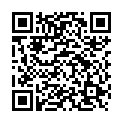|
|
|
| Module code: MEB_24_A_1.02.TMS |
|
|
4V (4 hours per week) |
|
5 |
| Semester: 1 |
| Mandatory course: yes |
Language of instruction:
English |
Assessment:
written exam 120 min
[updated 13.11.2023]
|
MEB_24_A_1.02.TMS (P241-0418) Mechanical Engineering, Bachelor, SO 01.10.2024
, semester 1, mandatory course
|
60 class hours (= 45 clock hours) over a 15-week period.
The total student study time is 150 hours (equivalent to 5 ECTS credits).
There are therefore 105 hours available for class preparation and follow-up work and exam preparation.
|
Recommended prerequisites (modules):
None.
|
Recommended as prerequisite for:
|
Module coordinator:
Prof. Dr.-Ing. Heike Jaeckels |
Lecturer: Prof. Dr.-Ing. Heike Jaeckels
[updated 10.10.2023]
|
Learning outcomes:
After successfully completing this course, students will be able to:
* describe the terms force and moment
* apply free body diagrams
* write down equilibrium conditions and solve systems of equations
* calculate and represent exteral and internal forces and moments in structures
* consider adhesion and friction in the analysis of static rigid body systems
Students will improve their subject-related technical English skills. Students will know the subject-specific English terms.
[updated 28.02.2025]
|
Module content:
Forces with a Common Point of Application
General Systems of Forces
Equilibrium of a Rigid Body
Multi-Part Structures
Internal Forces in Trusses
Stress Resultants in Beams
Static and Kinetic Friction
[updated 17.10.2024]
|
Teaching methods/Media:
Lecture with seminaristic elements
Inverted Classroom Method
[updated 17.10.2024]
|
Recommended or required reading:
Gross, D. et al., Engineering Mechanics 1, Springer, 2nd edition, 2013
[updated 17.10.2024]
|

